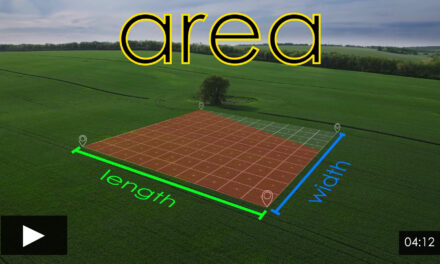This article takes a look at the 3-day notice to pay rent or quit – without late charge provisions.
A copy of the form is provided here so that you can follow along with the instructions.
Concern over late charge provisions
From time to time, we get reader questions. One of the recurring questions we receive has to do with the handling of late charge provisions in 3-day notices. first tuesday Form 575 includes provisions for late charges. In response to the concern over this issue, we have provided a 3-day Notice to Pay or Quit, Form 575.5, that does not contain the “offending” late charge provisions.
Here is the inquiry prompting our response. A reader asks:
Dear ft:
I purchased your Forms CD 3.1 disk and the first document that I pulled up has an error on it. It is form 575 (Three day notice to pay rent or quit.)
I showed it to my attorney and he said you can’t include late charges in the total amount. And if you did, it would invalidate your action.
How can I now trust any of the forms that you have on that disk?
Our legal editor responds:
Our Form 575 as it stands does not contain an error. For your local use, you would not include the late charge as your attorney instructs. Rather, you would leave any item that does not apply unchecked or blank.
We do recognize that the mere existence of the option for collecting a late charge that is built into the 3-day notice “spook” a number of judicial districts. As such, we have provided a separate 3-day notice without the late charge provisions.
Preparing Form 575.5
The following are instructions for Form 575.5. A full copy of the form is available here so you can follow along with the instructions.
Identification:
Enter the date and the name of the city where the notice is prepared. This date is used when referencing this three-day notice. | |||
Facts:
Enter the date of the lease or rental agreement. Enter the name of the tenant and the name of the landlord. If the lease was recorded, enter the date the lease was recorded, the instrument number it was given and the county of recordation. Enter a description of the property by its common address, legal description or assessor’s parcel number (APN). | |||
| Notice: | |||
| 1. | Breach of conditions: States the lease or rental agreement has been breached by the tenant for his failure to pay monies due the landlord. | ||
| 2. | Notice to pay or vacate: Provides the tenant with alternatives to either pay the amount due or vacate, which the tenant may voluntarily exercise within the minimum statutory redemption period of three days. | ||
| 2.1 | Amounts due: Enter the total amount of all monies due the landlord under the lease or rental agreement which must be paid to cure the breach. Do not include charges assessed under the lease or rental agreement resulting from the tenant’s failure to pay, such as late charges, return check charges or other administration-type charges. Enter the beginning and ending date for each period the rent remains delinquent and unpaid. Enter the amount of rent due for each period. Check the appropriate box to indicate any other periodic money charge arising out of the lease or rental agreement due and unpaid by the tenant for common area maintenance charges, homeowners association assessments or property taxes. Enter the amount of the unpaid monies due and unpaid for each periodically recurring charge. | ||
| a. | Tender of monies: Enter the name, address and phone number of the person to whom personal delivery of the amount due may be tendered. Enter the hours during which payment may be made. Enter the days of the week during which hours the tenant may make personal delivery of the amounts due. Editor’s note — If the address given does not allow for the tenant’s personal delivery of the rent, such as a post office box or some remote location, then the tenant can mail the rent, obtain proof of mailing to the name and address given and the rent will be deemed received by the landlord on the date posted. | ||
| b. | Deposit into account: Enter the account number and the name and address of the financial institution where the account is located if the landlord will permit the payment of the total amount due to be made by deposit. Editor’s note — The location of the depository institution into which the rent due may be deposited must be within five miles of the rental property. Also, should a residential tenant deposit only a partial amount into the account, the three-day notice process must begin anew for the amount remaining unpaid. | ||
| c. | Electronic funds transfer: States the tenant’s right to transfer funds electronically, if previously established by the lease or rental agreement, may be exercised to tender the total amount due. [See Editor’s note in §2.1b] | ||
| 2.2 | Vacate as an alternative: Provides the tenant with the alternative of vacating the premises in the event the amount of money due is not paid within the three-day period which runs beginning with the day after service of this notice as day one. Enter the name of the resident manager or property manager to whom the tenant is to deliver possession of the premises, if not the landlord. | ||
| 3. | Failure to pay or quit: States the tenant’s failure to perform on one or the other of the alternatives to pay or vacate the premises (quit) will result in the filing of an unlawful detainer action to regain possession and recover amounts due. | ||
| 4. | Cancellation notice: States the landlord will cancel (forfeit) the lease or rental agreement on the tenant’s failure to pay the amount due, terminating any further performance by the landlord under the lease or rental agreement. | ||
| 4.1 | Collection or rents: States the landlord has the right to collect the monies due and unpaid by the tenant on the landlord’s cancellation of the lease or rental agreement. | ||
Signatures:
Enter the date the landlord or his agent signs the notice. Enter the name of the landlord or his agent, and enter the address, phone number and fax of the landlord or his agent. Enter the signature of the landlord or agent named. | |||


















